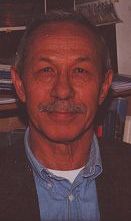

Most school children, although they would be hard pressed to locate it on a map of the Middle East, learn of Tarsus as the town from where Saul, later Paul, set out to spread the good word to the pagans of Rome and elsewhere, inviting them to a religion in which the meek, the poor and the peacemakers were to be exalted. But Tarsus also has an earlier claim to fame. The river Cydnus [ now called the Berdan ] still flows through it into the Mediterranean and it was here that the history of the world took another sharp turn, because Antony met Cleopatra:
"The barge she sat in, like a burnish'd throne,
Burn'd on the water: the poop was beaten gold..."
The choice location, the fertile soil, the sweet water
and the balmy climate of Tarsus make it natural, somehow, that though
by itself a small town it should, over the centuries, have
produced more than its share of men of religion, philosophers, dreamers
and romantics. Although fame and fortune may have bypassed most of them,
Tarsus has continued to export poets and scholars
to nearby Mersin and Adana, and to distant Istanbul and Ankara.
Ugur Ersoy comes to us from an established family blending
the landed gentry and religious teachers, with its origins in Tarsus.
It is a family of brave and stern men and matriarchal women, of whom he
has written with great skill and affection in books
and articles that have deliberately been addressed only to a limited audience.
The formal side of Ugur Ersoy’s life is easy to narrate.
He went to the American College, Tarsus for his secondary education
where he developed a taste for English drama and poetry that
he maintains to this day. Then on to Robert College, Istanbul for
a degree in Civil Engineering at a time when this discipline attracted
the most talented students because it had closer connections
with civilization. Ugur Ersoy’s Master of Science and Doctor of Philosophy
Degrees come from the University of Texas at Austin.
It is difficult to speculate the effect another environment might have
had on Ugur Ersoy, but in Texas the
friendliness of the people, their devotion to work and
their hearty pride left a mark on him. More important as an influence,
however, was his mentor, that most un-Texan Texan, Professor
Phil M. Ferguson. Though utterly modest and soft spoken and
patient, Phil Ferguson, like the concrete he wrote so knowledgeably about,
was solidly reinforced to the core.
Ugur Ersoy also worked in the well-known design office
of Raymond C. Reese in Toledo, Ohio for two years. With no exaggeration
it might be said that Ray Reese's office was a school in its own right.
He was a guide who imparted the quintessential concepts
of sound engineering to all who worked for him. Ugur Ersoy resisted the
temptation to stay on in the United States, primarily
because he was never one for the easy option. He came back to Turkey and
first served under the flag of the nation’s army.
He also joined, initially as a part-time instructor while still in uniform,
an unknown educational institution which consisted
of four temporary barracks acquired in 1956 but bore the lofty name of
Middle East Technical University. And something else
remarkable happened to him at about the same time. He met the attractive
young lady who was to become his lifelong partner.
Both bonds, in marriage as well as with Middle East Technical University,
became like hoops of steel. And forty years passed.
Today, Professor Ugur Ersoy is a very distinguished faculty
member of the Department of Civil Engineering of the Middle East
Technical University (METU) in Ankara. He has been part of the formation
and development of METU and the Civil Engineering
Program at METU since 1959. During these years, he has taught almost 5000
Civil Engineering Graduates. The University has moved
from strength to strength and now needs no introduction.
Professor Ugur Ersoy has contributed a lifetime of work to Middle East Technical University. He has served as Chairman of the Civil Engineering Department and as Vice-President of the University. He has initiated much research, won several awards and has also been very active in the development of Turkish and European Reinforced Concrete Building Codes.
Ugur Ersoy's book on Reinforced Concrete is the most forward
looking text of its kind in Turkish; it has long been a pacesetter
in the field and has achieved a level of popularity rare for a technical
book.